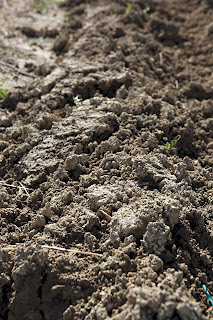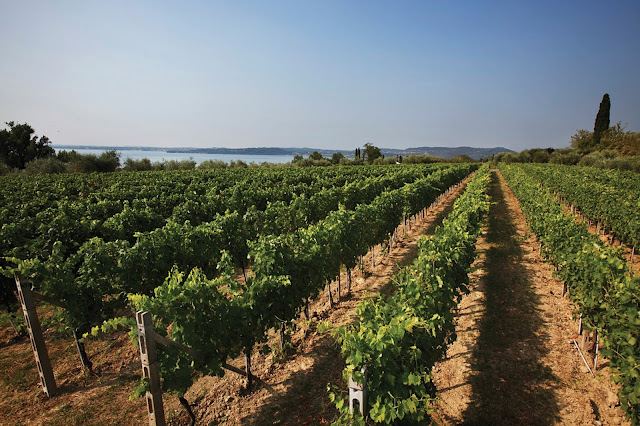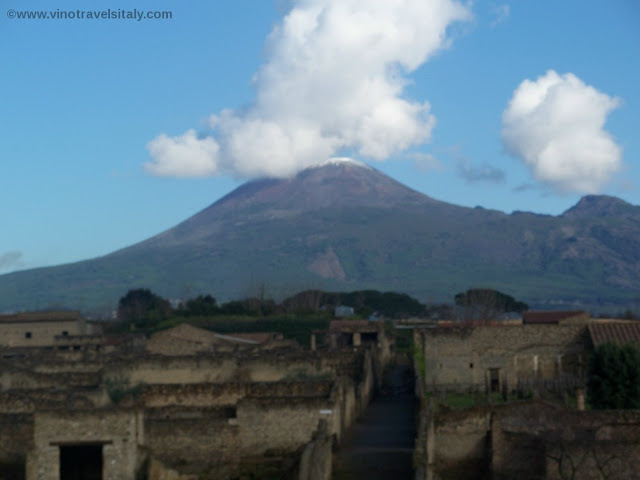I was excited to
receive an invitation to taste through the wines of Lugana with the
Lugana DOC Wine Consortium at the Boston stop on their US tour. I
had the pleasure to meet with the President of the consortium, Luca
Formentini, along with the Director, Carlo Veronese.
Lugana's wine region is tucked around the southern part of Lake Garda in northern Italy. Its wine is produced partly in two regions: Veneto and Lombardia and in the Brescia and Verona provinces. It exists in a mild microclimate with breezes off Lake Garda where the grapes are grown on a soil consisting of clay and morainic soil rich in minerals. Winemaking has been taken place there since Roman times. It was actually the first wine produced in Lombardy back in 1967 and was one of the first DOC's within Italy itself. According to Luca, he considers Lugana to be “a small DOC with exceptional quality and a marked personality”.
Some interesting
facts on Lugana:
- They export 70% of their wine production
- Vineyard territories have grown by 62% between 2008 and 2015
- Bottle production has doubled since 2008 to the present totaling 13.9 million bottles produced
The local grape
grown in Lugana is turbiana, said to be closely related to the
trebbiano di soave grape. Most producers are making their lugana wines with 100% turbiana. Turbiana are white grapes that are elongated
in the shape of a pyramid, greenish-yellow in color with floral
aromatics, citrus and that have the ability to age.
 |
| Turbiana grapes |
 |
| Clay soil of Lugana |
I tasted through
19 white wines of Lugana and my top picks
were the following:
- 2015 Silenzi di Terra Lugana
- 2015 Bertagna Lugana 2015 Cobue Lugana Montelupo
- 2015 Malavasi Lugana
- 2015 Olivini Lugana
- 2015 Pasini San Giovanni Lugana Il Lugana
- 2015 Lenoti Lugana Decus
- 2015 One Pio Lugana
- 2015 Selva Capuzza Lugana Selva
Not having much
experience with tasting wines from Lugana prior to this tasting, my
take away is that these dry wines are beautifully refreshing, clean,
aromatic with citrus and minerality along with nice structure and
acidity. Obviously this varies from wine to wine and the ones I
preferred had a stronger presence of fruit on the palate, but I
enjoyed the balance on many of the ones I tasted.
Luigi Veronelli,
Italy's wine critic, was quoted on the consortium's site stating his
opinion of Lugana “Drink your Lugana when is very young, you
will enjoy its freshness. Drink you Lugana after two or three years
and you will enjoy its completeness. Drink it after ten years and you
will be amazed by its composed authoritativeness. Lugana wines, rare
quality for white wines, have an extraordinary capacity to be
recognized. You taste a Lugana and, if you are a good taster, you
cannot forget it. A great painter is recognizable, and so is a
musician: every time, with a work, you feel it’s his.”
Lugana wines are
best paired with typical foods of the region including a variety of
freshwater fish and fish from the sea. In Lugana it's common to see
it paired with eel, coregone and trout. The more complex forms of
Lugana, like the superiore and riserva, are able to be paired with
more complex, richer fish dishes and sauces. Spumante can be paired
a number of ways, but is enjoyable with some antipasti and salumi.
#SaveLugana
A couple years ago there was a push to #SaveLugana as the government wanted to build tracks for a fast speed train from Milan to Venice thereby destroying vineyards dedicated to producing Lugana wines. Basically the petition was to utilize the current tracks that are present that just slows the train down coming through the area therefore preserving the land. Unfortunately the government is proceeding forward. What a shame!
A couple years ago there was a push to #SaveLugana as the government wanted to build tracks for a fast speed train from Milan to Venice thereby destroying vineyards dedicated to producing Lugana wines. Basically the petition was to utilize the current tracks that are present that just slows the train down coming through the area therefore preserving the land. Unfortunately the government is proceeding forward. What a shame!
If
you haven't tried wines from this region you're missing out and must
add it to your list!
Sources of
information and pictures property of Consorzio Tutela Lugana














